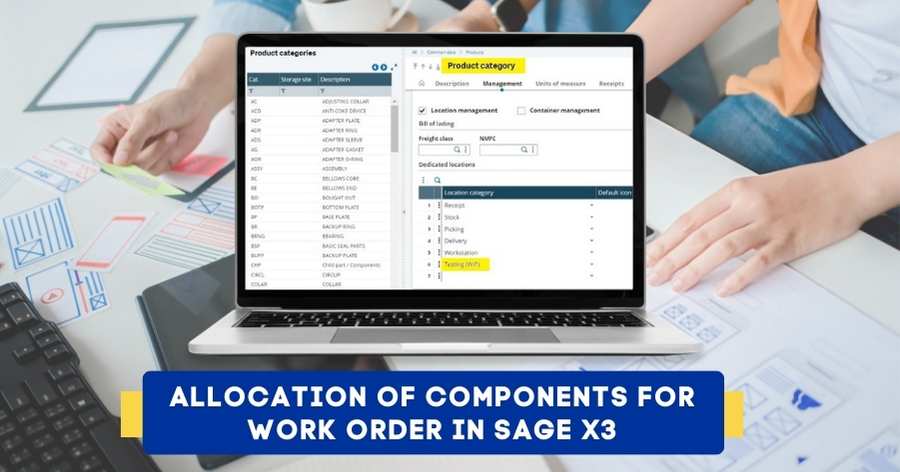Inventory is an integral part of the business where all the goods and raw materials are stored to sell later to the consumers. A periodic inventory system is a significant term for enterprises. It is a form of inventory evaluation method where the inventory is counted at the end of the accounting period. The count is not done after each sale or purchase. The benefit of this method is that allows the tracking of the inventory from the beginning to the end of an accounting period. In this article, let us learn more about periodic system inventory in detail.
What is a Periodic Inventory System?
A periodic inventory system is an inventory valuation method where the inventories are physically counted at the end of the accounting period to calculate the cost of goods sold(COGS). This system is used by small businesses that can’t afford to leverage computerized or automated workflows. Normally, small businesses have easy-to-manage inventory, hence, this type of inventory valuation method is convenient.
In a periodic inventory system, the ending inventory balance is counted only at the end of the accounting period. The cost of goods sold COGS is a crucial metric to be calculated and subtracted from the revenue. The result is the gross margin. In the periodic inventory system, the COGS is calculated as:
COGS = Beginning Balance of Inventory + Cost of Inventory Purchases – Cost of Ending Inventory
Even if the inventory were counted weekly, monthly, or quarterly, they would not be aware of the inventory count.
How Does Periodic Inventory System Work?
Check out the following steps to see how the inventory periodic system works:
- At the beginning of the accounting period, the value of the inventory from the previous accounting period is documented by the company.
- Also, the organisation will record all of its purchases during that specific period.
- Later at the end of the period, the company will physically count in the inventory balance to determine the ending balance.
- The cost of goods sold is calculated by the company after deducting the ending inventory balance from the sum of the beginning inventory balance and the actual cost of purchases done during that specific period.
Cost of goods sold (COGS) = Beginning inventory + Purchases – Closing inventory
Note that all the inventory-related transactions are documented in the financial statement of the business.
Also Read : What is Inventory Cycle Count?
Features of the Periodic Inventory System
Given below are some of the features of the periodic inventory system:
→Physical count: The count of all the raw materials, work in process and finished goods are counted physically and documented in the books.
→Lacks Real-Time Tracking – This system does not use any automated software, hence, there won’t be any tracking in real-time. Hence, there is an interval between the two counting sessions. Plus, in this gap, no information on stock levels is reported.
→Calculation of Cost of Goods Sold COGS: In this method, the Cost of Goods Sold (COGS) is calculated regularly for each process.
→Challenging Process: This method involves physically counting inventory. So, accounting periodic inventory system is more challenging and will lack visibility and control. Errors and poor handling can result in incorrect information and data, causing confusion and misunderstandings.
→Business-oriented Method: A periodic inventory system cannot be applied to businesses of all sizes. It can only implemented for small businesses with a fixed amount of inventory.
Factors to Consider When Using a Periodic Inventory System
»Organisational Size: The size of the business matters as this system is suitable only for small businesses with small inventory levels.
»Inventory turnover: If the organisation has a high inventory turnover, then it will incur frequent losses in the periodic inventory system.
»Cost: In this aspect, they are affordable as there is no use of experts or high-end software. The expenses will only increase if the inventory levels are large with high turnovers.
»Inventory Type: Businesses engaged in the trade of perishable goods necessitate regular inventory checks, making a perpetual inventory system well-suited for their needs.
Example of a Periodic Inventory System
The Cost of Goods Sold is a significant part of the income statement account. However, a physical count has to be done to determine the exact count of the inventory under the periodic inventory system.
An example of a periodic inventory system is a small retail store that conducts physical inventory counts at the end of each month. Let’s say at the beginning of the month, the store has Rs 50,000 worth of inventory. Throughout the month, they make purchases totalling Rs 30,000 and record sales of Rs 20,000. At the end of the month, a physical count reveals the remaining inventory worth Rs 60,000. The Cost of Goods Sold (COGS) for the month is then calculated as:
Cost of goods available for sale – Ending inventory = Cost of goods sold
Rs 20,000 (starting inventory + purchases) – Rs 60,000 (ending inventory) = Rs 10,000
Which Organisations Use the Periodic Inventory System?
- A periodic inventory system applies only to small and retail companies.
- Organisations that have a large inventory and less per-unit price.
- In situations where companies are unable to interrupt their daily operations for frequent physical inventory inspections.
Benefits of Periodic Inventory System
Companies adopt this system as it is easy to implement. Plus, the cost is less and there is no requirement for more staff to operate it. In addition, the deployment time is also less. The inventory count is added to a piece of legal paper. It includes product data if the goods are in smaller amounts. The count is done on a day or during the week which is sufficient to calculate the value of inventory at the end of the accounting period.
The pen and paper are the resources used to record the inventory levels. There is no need for any tools or equipment. Another advantage of the periodic inventory system is that the quantity is physically counted and recorded.
Disadvantages of the Periodic Inventory System
A periodic inventory system comprises advantages and disadvantages. Here let us look into some of the disadvantages:
One of the biggest disadvantages is that the collected data is only minimal. In addition, the information recorded is not done in real-time. If you want to investigate inventory levels for a particular issue, not many details are available from the beginning to the end. It becomes tedious to identify the source of the issue.
Inventory data is not recorded after every sale or purchase. It is discretely documented at distinct periods.
In the interim period, it will not provide any details of the cost of goods sold.
During the intervals, there is no way to track the losses, overages or obsolete goods. This will result in costly adjustments after the inventory is physically counted. In the periodic inventory, the stock levels are updated only after taking a physical count at the end of the period.
As there is no room to track your goods available for sale in real-time, there is no room for growth. If you are adopting this technique to your growing business, it will only become time-consuming and tedious.
What is a Perpetual Inventory System?
The perpetual inventory system keeps track of the inventory regularly from the beginning to the end of the period. Computerised systems are implemented which use point of sales(POS) and enterprise asset management technology. The enterprise asset management software records the purchases and sales. All these technologies are more innovative and sophisticated than the periodic system.
The perpetual system gives a detailed view of the inventory. All the changes that occurred in the inventory are recorded accurately(assuming there is no theft or damage to the goods). After each sale, the cost of goods sold is updated regularly. All this information is collected in real-time which is sent to a centralised database.
Implementation of technology eases the operation and improves the function. Items are assigned barcodes to monitor their movement and shelf-life. Introducing computer software updates inventory as products move in and out of a company via the point-of-sale system. Distinct ledgers are maintained for recording details about purchases, Cost of Goods Sold (COGS), and the remaining stock.
Periodic vs. Perpetual Inventory System
The Perpetual and periodic systems are stockpile tracking and management systems. It is utilized by the companies depending on their rules and requirements. Let us look at the differences between the two:
In a periodic system, the inventory is not tracked daily. A physical inventory count is done at the end of the accounting period. In contrast, a perpetual inventory records the inventory of the goods available for sale regularly.
In comparison to periodic inventory, the perpetual system is costlier.
Companies have to hire the required workforce to track the inventory in the perpetual system. This requisite is not necessary in the periodic inventory system.
Finally, in the perpetual system inventory count is known throughout the accounting year, whereas in the periodic inventory system, it is known until the end of the accounting period.
Conclusion
Finally, a periodic inventory system is an inventory valuation method where a physical inventory count is taken at the end of the accounting period. The physical inventory is counted to determine the value of the inventory. This method is particularly susceptible to discrepancies between recorded and actual inventory levels, potentially leading to substantial adjustments.
The periodic system’s accuracy hinges on the timing of physical counts, making it less dynamic compared to perpetual systems. Companies utilizing periodic inventory must carefully manage the trade-off between the convenience of less frequent counting and the risks associated with potentially outdated and unreliable inventory information. Companies can rely on ERP systems to get accurate inventory information.







